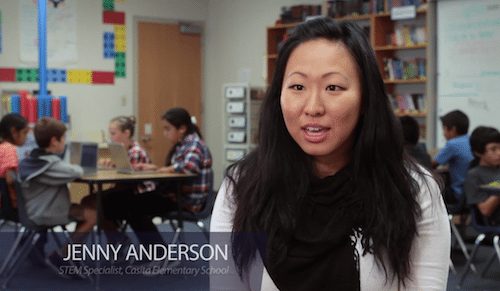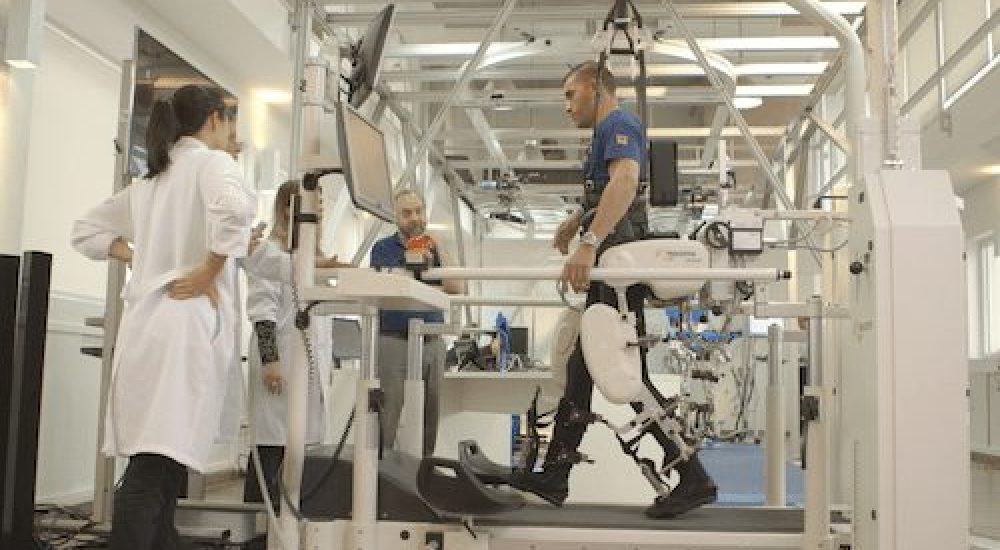Breakthrough is produced by Hollywood power players Ron Howard and Brian Grazer and their Imagine Entertainment company. Each week a different actor or director will delve into real world, human stories that connect the ways that science impacts our lives. The directors include actors like Angela Bassett and Paul Giamatti, Producer/Directors like Ron Howard, Bret Ratner (X-Man) and Akiva Goldsman (A Beautiful Mind; I, Robot) and Peter Beg (Friday Night Lights).
BOOST Collaborative will be publishing a special series of blogs from November 2 to December 14, highlighting each scientific discovery. The day after each episode’s air date, visit the blog to hear recaps and education connections from specialists reflecting on how each show’s topic relates to STEM. This week, we hear from Jenny Anderson and her reflections from Episode Two: More Than Human. You can watch Breakthrough on the National Geographic Channel on Sundays at 9/8c.
Change is inevitable and is the only constant in the world.
I’m honored to be part of the educational field and as a teacher, I’m excited to help shape learning experiences by making them more relevant and engaging. From watching “More Than Human”, the second episode from National Geographic’s BREAKTHROUGH series, I found it incredibly valuable to see how our world is evolving and the way that technology has been integrated into the complexities of the human system.

Although each scientist in the episode, “More Than Human,” focused on different aspects of robotics, cyborgs, and mechanical technology, each discovery or invention share common qualities. These scientists take risks in the development of their experiments. In addition, they go through many iterations of prototyping and make mistakes and learn from them each time.
Furthermore, the scientists have compassionate perceptions in order to help the world, whether it be through first response mindset, transforming deaf communication, or enhancing technologies with paraplegics. These qualities are what I found to be worthwhile to take back to my school so that kids can practice the same approaches to learning in order to make a positive impact in the world.
The episode of BREAKTHROUGH honed in on a critical idea: being ready for the unexpected.
This idea relates to the trend in education of having a growth mindset. This type of thinking allows students and teachers to be able to have an open mind in approaches to learning and various methods in sculpting a solution. Often, we’re in such a rush to get to a solution but really, the process is the diamond in the rough.
So how do educators do this? I may not have the solution but what I do know is that we need to teach our kids to be inquirers, to have empathy, and to be creative in the process of imagining and learning. Education needs to value the creativity and imagination that the human brain offers and the empathy and compassion the heart has.
Providing students with opportunities such as design challenges and learning experiences where inquiry is valued and a plethora of approaches to learning is highlighted, is crucial. To be a part of the technological change in society, we’re at a turning point in education where a seismic shift is about to happen.
We can be part of the change or lead it.
 Jenny Anderson is a K-5 STEM Specialist at Casita Center, an International Baccalaureate – Primary Years Programme candidate and STEM magnet elementary in Vista, CA. This is her 9th year teaching and she specializes in delivering an enriching and creative, technology-driven instruction focusing on programming, game design, gamification, digital portfolios, video productions, flipped classroom, Genius Hour, makery, and anything and everything EdTech. She is a Common Sense Media Educator, certified in Graphite. She presents at district professional development days. She also coaches teachers at her site, where Kindergarten students are 1:1 iPads and 1st-5th graders are 1:1 Chromebook devices. She works with teachers to integrate GAFE and other web-based tools to create a rigorous and engaging curriculum. She is committed to bringing equity to STEM education and is passionate about developing programming skills at a young age. She received her Masters in Education at the University of California, San Diego. You can follow her on Twitter or read her blog.
Jenny Anderson is a K-5 STEM Specialist at Casita Center, an International Baccalaureate – Primary Years Programme candidate and STEM magnet elementary in Vista, CA. This is her 9th year teaching and she specializes in delivering an enriching and creative, technology-driven instruction focusing on programming, game design, gamification, digital portfolios, video productions, flipped classroom, Genius Hour, makery, and anything and everything EdTech. She is a Common Sense Media Educator, certified in Graphite. She presents at district professional development days. She also coaches teachers at her site, where Kindergarten students are 1:1 iPads and 1st-5th graders are 1:1 Chromebook devices. She works with teachers to integrate GAFE and other web-based tools to create a rigorous and engaging curriculum. She is committed to bringing equity to STEM education and is passionate about developing programming skills at a young age. She received her Masters in Education at the University of California, San Diego. You can follow her on Twitter or read her blog.
